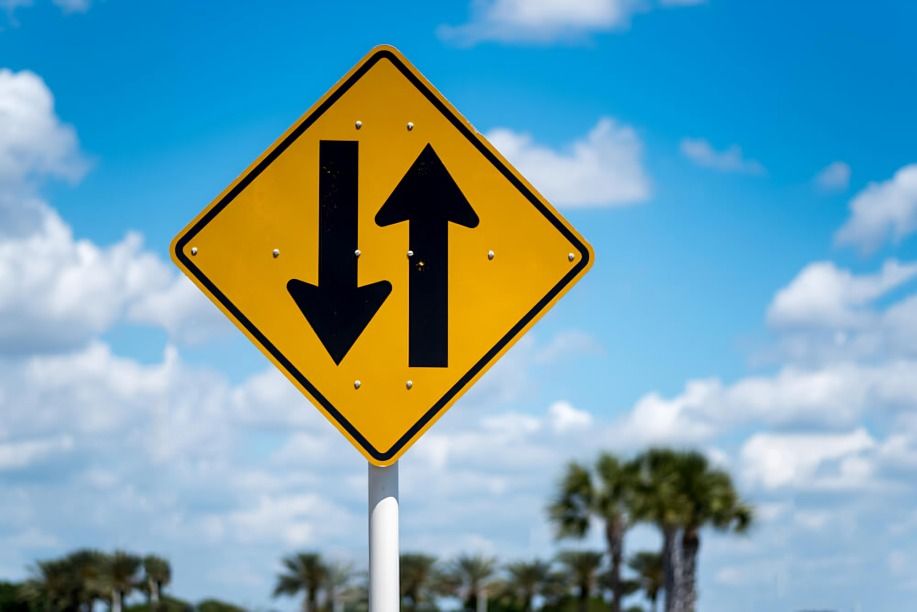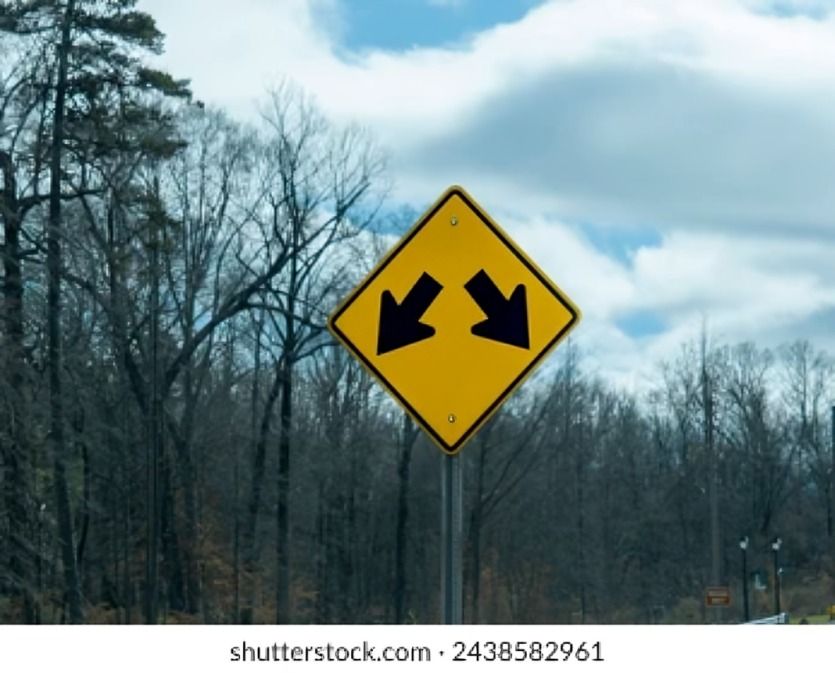
“
Two-Way Crossings present unique challenges as they involve traffic flowing in both directions. Understanding the two way crossing facts is essential for safe driving. Drivers must be particularly vigilant at these intersections, as vehicles may approach from either side, requiring careful navigation and adherence to traffic signs.Discover essential two-way crossing facts to navigate intersections safely by following this complete guide.1
1
”
The two-way traffic sign is a warning to drivers that they're entering a roadway with opposing traffic, after leaving a one-way street. It alerts drivers to the presence of oncoming vehicles, potentially limiting their ability to pass freely. 1

The two-way road sign is typically yellow with a black outline, featuring two opposing black arrow icons in the centre, indicating the flow of traffic in both directions.
The two-way traffic sign is diamond-shaped, featuring two opposing arrow graphics in the centre. This shape is commonly used for warning signs, signalling drivers to be cautious of oncoming traffic. 2
This road sign helps prevent accidents that could happen if drivers mistakenly enter the wrong lane on a two-way road. Traffic signs are essential for guiding both drivers and pedestrians, with rules designed to ensure safety for all. 3
Choosing the appropriate two-way traffic signs involves considering quality, visibility, and adherence to local traffic regulations. The signs should be made from durable materials that can withstand different weather conditions. 4
To maximise the effectiveness of a two-way traffic signal, it should be strategically placed at key locations where drivers will receive clear notice of upcoming two-way traffic zones. This includes exits from highways, one-way streets, and other areas.5
The two-way traffic signal is a vital road safety tool designed to alert drivers to oncoming traffic and promote safe, responsible driving. Its role in preventing accidents and managing traffic flow is essential. 6
When motorists see the sign, they not only understand the rules for driving on the right side of the road but also recognize the potential consequences of ignoring these rules. No one wants to receive a ticket for breaking road regulations.7

They should be installed at a height and location where they are easily visible to drivers, regardless of vehicle type. Typically, this means positioning signs at a height of 7 to 8 feet above the road surface to ensure visibility for most vehicles.
The reflective quality of the sign helps improve visibility during nighttime or low-light conditions. Most road signs use retroreflective materials that bounce light back towards the source, such as headlights. 8
Properly placed and maintained two-way road signs help prevent accidents by informing drivers of potential hazards. Studies show that well-placed road signs can reduce the likelihood of crashes by up to 30%. 9
Ignoring two-way road signs can lead to traffic tickets and legal consequences. In many jurisdictions, violating road sign regulations can result in fines ranging from $50 to $500, depending on the severity of the infraction and local laws. 10
International design standards, such as those established by the Manual on Uniform Traffic Control Devices (MUTCD) in the U.S. and the Vienna Convention on Road Signs and Signals, ensure consistency in the appearance and functionality. 11
Two-way road signs must be positioned at critical locations such as intersections, exits from one-way streets, and before areas where traffic flow changes. Proper placement ensures that drivers are given ample warning and clear guidance.12
These signs must adhere to local and national traffic regulations and standards to ensure they meet safety requirements and legal guidelines. This includes following specifications for size, colour, and visibility. 13


